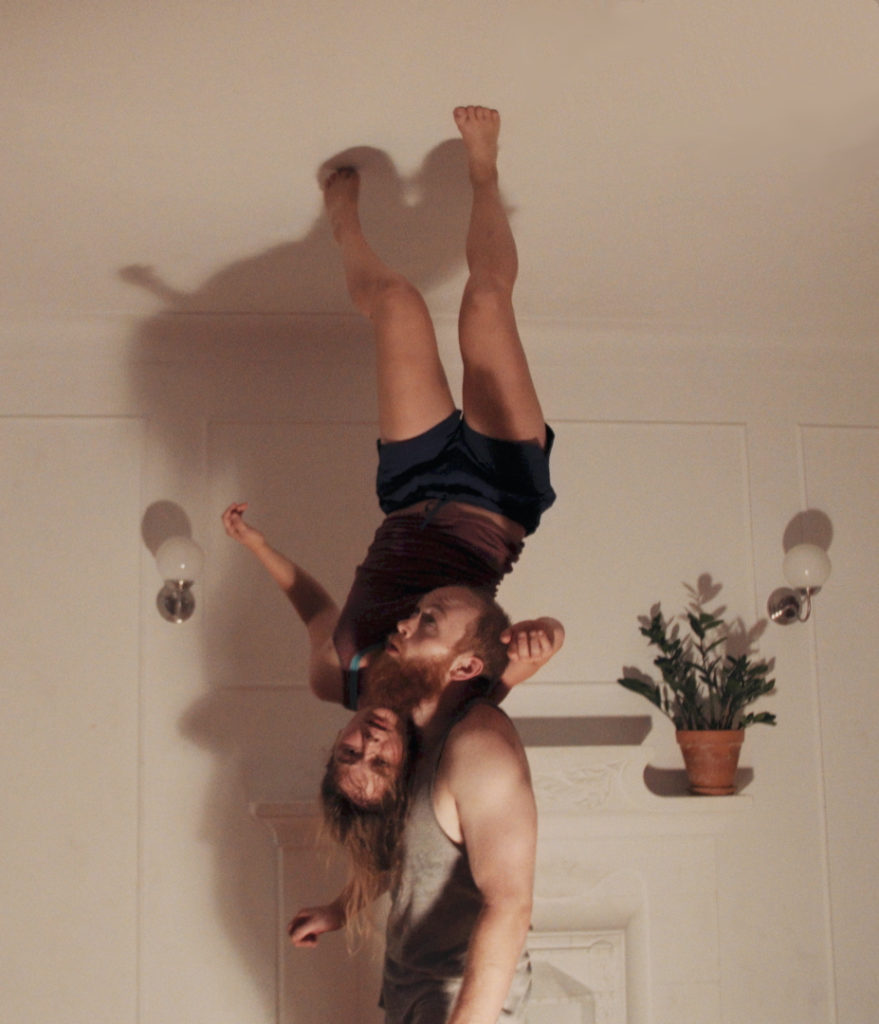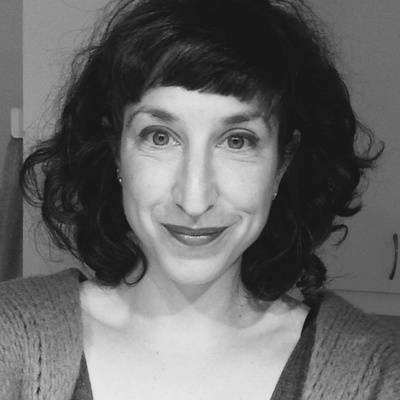Other Circuses in Montréal: An Embodied Expression of the Queer Paradigm
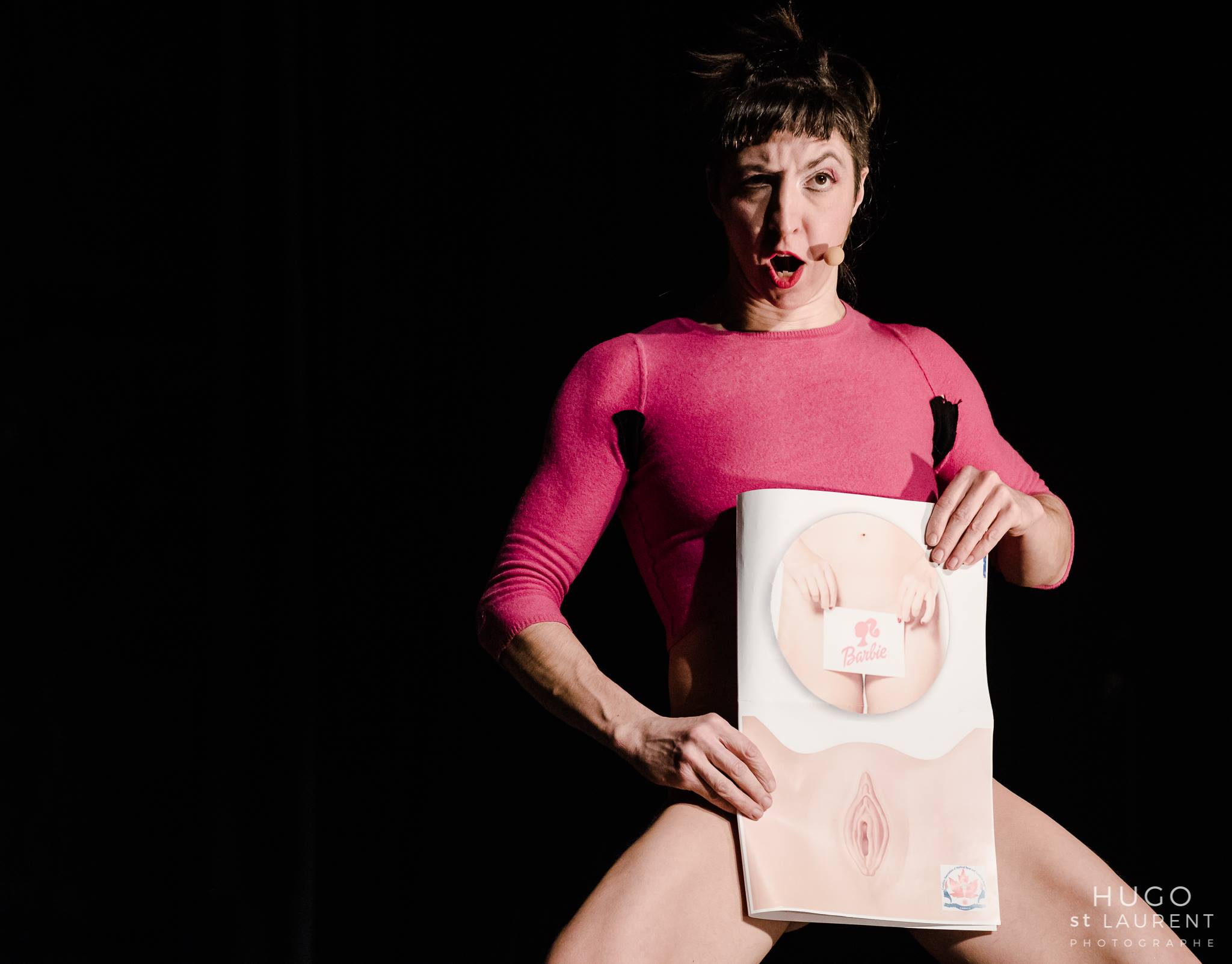
This article broadly presents my dissertation defended last June at Concordia University. The main argument is that by offering performances that qualify as the embodiment of the queer paradigm, a case is built that lesser-known circus artists are renewing circus performatives forms in Montréal.
Circus, Out of the Normate
Circus nourishes an equivocal relationship to social mores which translates into its aesthetics. It is an art where conventional rules don’t apply, an art that plays with polarities, that dwells in ambiguities, that seeks other experiences of the world. By unfolding between extremes, and being full of contradictions, doesn’t circus create micro-utopias within contemporary issues, which allows us to think outside of categories and imagine other possible stances?
Quebec is an interesting case of the relationship between circus’s performative forms and the normate. Since its very beginnings, the Quebec circus has evolved from the margins, or at least, by distancing itself from the main artistic field. It started out of independent marginalized street artists, from the world of stilts and fire-blowing, away from theater venues and conventions or public financing. Slowly, however, it created a flourishing economy (thanks to some locally-based companies that are recognized throughout the world) and that have generated easily recognized aesthetics, presenting a vision of the world that is global, productive and all about mastery. In doing so, that circus has internalized social norms, or rather, has established a new normate. Yet within this circus ecosystem, there are artists and collectives who do not stand by the values and aesthetic standards promoted by those main companies. Among them, I identified two distinct artistic groups whose creative work comes across as giving social representations out of the normate: the community-driven Productions Carmagnole, and a subgroup of four artists: Andréane Leclerc, Claudel Doucet, Émile Pineault and François Bouvier. I analyze their work through the contours of a queer philosophy which, to me, establishes a concept of the world outside of the norm.
The queer paradigm can be contemplated through the idea of “entre”, in-between. The in-between idea had appeared to me in Schechner and Turner literature to express a physical or symbolic liminal space, which is to say transitional, space, where the social mores could be questioned and re-imagined, especially during rituals. Inspired by the philosophers Paul B. Preciado, Jack Halberstam, Serge Gruzinski, Judith Butler and the Deleuze and Guattari duo, I found the notion of in-between to resonate with the queer utopian non-binary vision of the world where thinking is done in terms of relationships and where the verticality of lineage, meaning a hierarchal, one-directional conception of transmission, is replaced by rhizome and hybridity. The in-between is an opportunity to see the elements of the world connected, reconciled rather than categorized, to think of them according to the exchanges they maintain and for the potential of permanent transmission and hybridization they carry. As an overarching concept to reconsider some founding characteristics of the normate, the in-between represents the dialogue between – or outside of – polarities and symbolizes the possibility of unlearning, of deconstructing frames of thoughts, and gives way for individual and social transformation. I argue that this is embodied at different levels in the performances I studied.
Performances Like Rituals for a Transformative Circus
Carmagnole is a company based on the idea of collectiveness, inspired by the ideals of the Quebec social circus in which the Carmagnole’s founders have participated. Carmagnole is not a closed entity of artists. Formerly an annual festival, it remains the dream of a free, united, non-hierarchical community, now embodied during festive performances. Those, usually cabaret-style, are more than a show, they are ritualized events where the entire circus community comes together to watch an eclectic selection of acts.
Carmagnole describes itself as a “safe space”, a benevolent place where you can feel free to be who you are, the way you want, as an artist and as an audience member. Everyone is encouraged to wear costumes, in the utopian desire to let go of differences. Following Van Gennep, Schechner and Turner’s theories, Carmagnole’s performance is presented as a ritual, an intermediary space outside of the normalized world, composing a temporary community where one can break away from the codes of the milieu to experiment with something new and potentially transformational. The notion of in-between is a central element to understand Carmagnole’s position in the Montréal circus ecosystem, by its ability to bring together on a stage and in the audience different socio-artistic groups that are not used to sharing. The evenings are militant cathartic performative experiences for the milieu but also for society at large, where artists from all backgrounds don’t have to conform to the aesthetic and technical expectations of the industry. Many artists use this stage to show new works for the first time or even works in progress, to allow themselves to be transgressive and to test the limits of what is acceptable for the public. Instead of their usual perfection, bodies express intimacy and vulnerability beyond normativity.
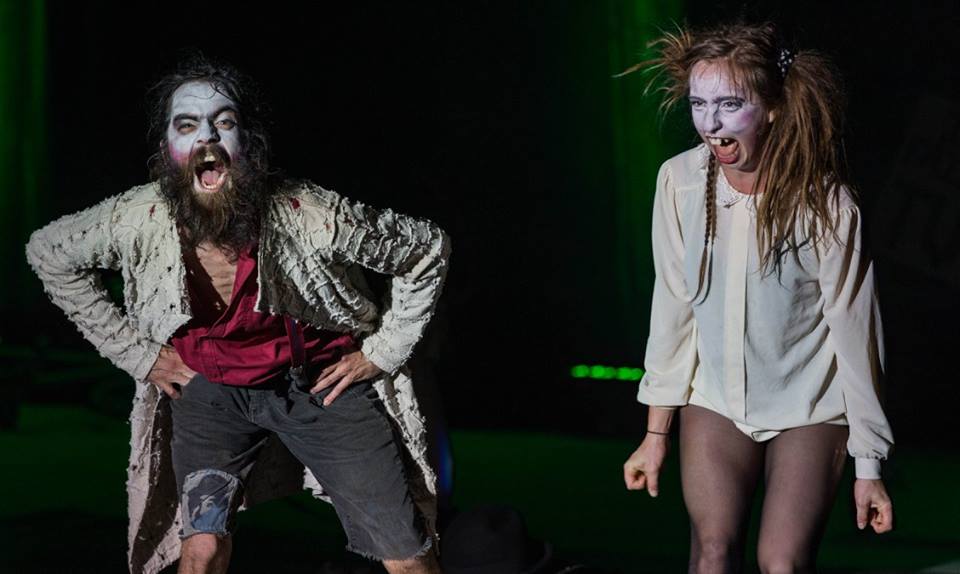
Internationally known artist Valérie Doucet says that it is a unique place in Montréal where she can make attempts thereby unlearning what she has trained in school and creating new material. The work of Éliane Bonin aka (Lili la Terreur) is a good example of insubordination to the milieu’s expectations. In her iconic clown act Labiaplastie (plastic surgery of the vulva), half-naked – the lower part of the body -, she questions our relationship to the female sexual organ, often still considered too inconvenient to be represented. The performer offers a very concrete – and ironic – workshop for those who would like to make her beautiful again. Her body is her tool of experimentation and she manipulates it without restraint nor convenience. The result is an extremely exhibitionist and inconvenient number. Yet, le public, though uncomfortable and challenged, loves it. As a space of in-between artistic and social worlds, Carmagnole is a place of artistic and personal disinhibition aiming at repossessing one’s desires, one’s physicality, one’s senses. A Carmagnole performance is both confronting and liberating and comes across as a queer experience in that it engages a movement of transformation, it is a utopian laboratory, both artistic and social.
Experience and Process at the Heart of Performing
In parallel, Andréane, Claudel, Émile and François are shaking up the boundaries of what is considered circus in Montréal. They occupy a blurred, undefined, hybrid space that exists in and out of the circus milieu, to offer a diversity of practices, visions and experiences, within the circus community but also beyond, in other artistic networks. Echoing Josette Féral’s performative theater, I named this group of artists performative circus, a circus where it is the real experience, thanks to the most honest and spontaneous performative act possible, that prevails over-representation, dramaturgy or fiction. By distancing themselves from a disciplinary heritage based on demonstration of physical prowess, and by refusing to reproduce methods, the artists place process and experience at the center of their work. It represents a discursive stance on the world. Their postures favor the flexibility of form, its adaptability, over its accomplishment. The artists aspire to create from a sensory relationship, rather than from mastery, their body embracing what it means to be influenced by the surroundings. Claudel created a piece “for apartment” Se Prendre, where every time it is performed, the two artists have to adapt to an original setting, building new relationships to walls, door frames, ceiling heights.
In her work, rather than settling into a position of contortion, Andréane is interested in the path(s), within her body that might lead there, creating amplitude inside her joints and organs to form a shape from the inside out. It is there, in between the two, linking inside and outside, that lies the prowess she says. The attitude communicated by these performances is one of de-hierarchization of the world where all the elements of the environment are considered equal partners.

In More than Things, Emile Pineault interacts with soft textile sculptures, light and sound in a similar manner as with his dancer accomplice. They are not objects serving a purpose, to “be used” anymore. They are part of a relationship and have an impact on the body. Everything in the artistic intentions invites dialogue between those external and internal elements as a way to question all physical and symbolic borders, and to open new mental spaces. Indeed the concept of in-between that I bring in this context is symbolic. It represents a utopian creative space, which intends on pushing the physical, psychological, social and political limits, whether they are concrete or abstract. Here, it is the performative forms themselves that transmit a queer representation of the world.
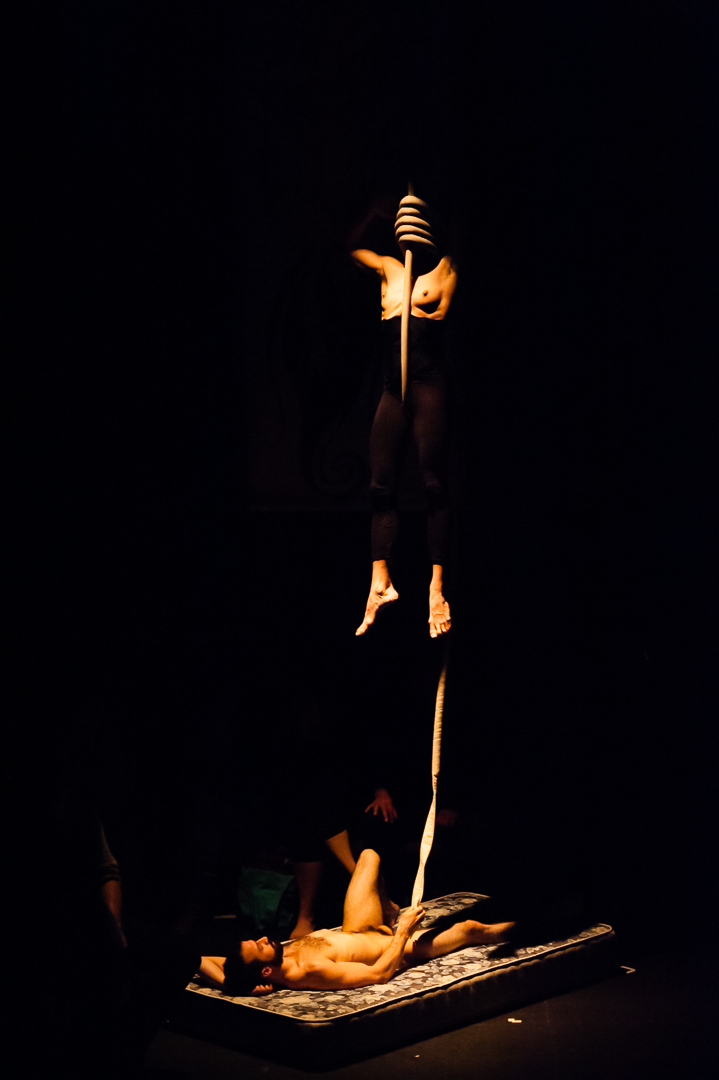
This call for new circus performative spaces is a sign of the milieu’s maturity; as artists become autonomous, they are able to question the semi-monopolies and tendencies towards standardization. Carmagnole and the performative circus are definitely an indicator that the circus artistic milieu is alive and in motion. The two approaches push the limits of circus arts in Montréal, and more broadly in Quebec, thanks to representations of non-conformist currents of thought that I have identified as queer that translate into disruptive artistic forms and experiences. They are, I believe, the mirror of a time presenting an ideological rupture offering transitional space towards new forms of being in the world: embracing movement and fluidity. Yet, the works of the performative circus are also part of a general propensity of the arts to move towards full performativity, refusing all kinds of demonstration of virtuosity. Those performances are found at the fragile hinge between public introspection and the humble sharing of intimacy.
Carmagnole, on the other hand, goes back to a circus where community, solidarity and commitment are at the heart of values and practices, and where the collective experience and social bonds prevail. Through these different approaches, we see a dynamic tension between a longing for a sense of collectiveness and an individual quest. Carmagnole makes room for the self-taught alongside the professionals, while the performative circus artists are products of the elite system. Together though, all these artists show desires to deconstruct and recompose, thanks to experiences of sensitive connections to oneself and to the Other, either expressed through the community or at a personal level. Thus, all carry a utopian dimension. Circus transcendence no longer exists by surpassing one’s physical capacities but rather in the reinitialization of bodily, sensorial, social patterns and potentialities. The artists presented in this thesis offer an experience of “performative utopia” to borrow Jill Dolan’s terms, that is, the utopian experience of another type of possible relationship to the world, experienced during each performance thanks to the powers of one’s senses and imagination.
Interestingly, in order to continue developing the milieu, those other circuses have created spaces for themselves, in its gaps and at its margins, which cohabit with the rest of the ecosystem while nourishing it. I would even say while taking care of it.
More Than Things Emile Pineault
.
Cherepaka Andréane Leclerc
.
Se Prendre Claudel Doucet
. Bibliography Butler, Judith. 1988. « Performative Acts and Gender Constitution: An Essay in Phenomenology and Feminist Theory ». Theatre Journal 40 (4): 519–31. ———. 1993. Bodies That Matter: On the Discursive Limits of Sex. Routledge. ———. 2006. Gender Trouble: Feminism and the Subversion of Identity. New York: Routledge. ———. 2014. Qu’Est Ce Qu’une Vie Bonne ? Payot. Deleuze, Gilles et Felix Guattari. 1998. Mille Plateaux : Capitalisme et Schizophrénie. Paris: Editions de Minuit. Feral, Josette 1988. « La Théâtralité: La Spécificité Du Langage Théâtral ». Poétique. 347-361 Gruzinski, Serge. 1999. La Pensée Métisse. Paris: Fayard/Pluriel. Halberstam, Jack. 2011. The Queer Art of Failure. Duke University Press. Preciado, Paul B. 2015. « Quelle reconnaissance, des autres et de soi, quand le timbre, façonné par les injections de testostérone, se fait plus grave ? » Libération, 23 octobre 2015. https://www.liberation.fr/debats/2015/10/23/une-autre-voix_1408432/ ———. 2019a. Un Appartement Sur Uranus. Paris: Grasset. ———. 2019b. « Le corps est la chose la plus public qui soit » interviewé par Marie Richeux. France Culture, 25 mai 2019, Audio. https://www.franceculture.fr/emissions/par-les-temps-qui-courent/paul-b-preciado. ———. 2020. « Ma masculinité dissidente est aussi délirante que ma masculinité normale » interviewé par Géraldine Sarratia. Le Goût de M, 22 mai 2020, Audio. Turner, Victor W. 1969. Le Phénomène Rituel. Structure et Contre-structure-. PUF. ———. 1982. From Ritual To Theatre: the Human Seriousness Of Play. Performance studies series 1. New York City: Performing Arts Journal Publications. Van Gennep, Arnold. 1907. Les Rites De Passage. Paris: Editions A&J Picard. Main image: Lili La terreur. Labiasplastie ---- Link to thesis via Spectrum.
.
Editor's Note: At StageLync, an international platform for the performing arts, we celebrate the diversity of our writers' backgrounds. We recognize and support their choice to use either American or British English in their articles, respecting their individual preferences and origins. This policy allows us to embrace a wide range of linguistic expressions, enriching our content and reflecting the global nature of our community.
🎧 Join us on the StageLync Podcast for inspiring stories from the world of performing arts! Tune in to hear from the creative minds who bring magic to life, both onstage and behind the scenes. 🎙️ 👉 Listen now!

